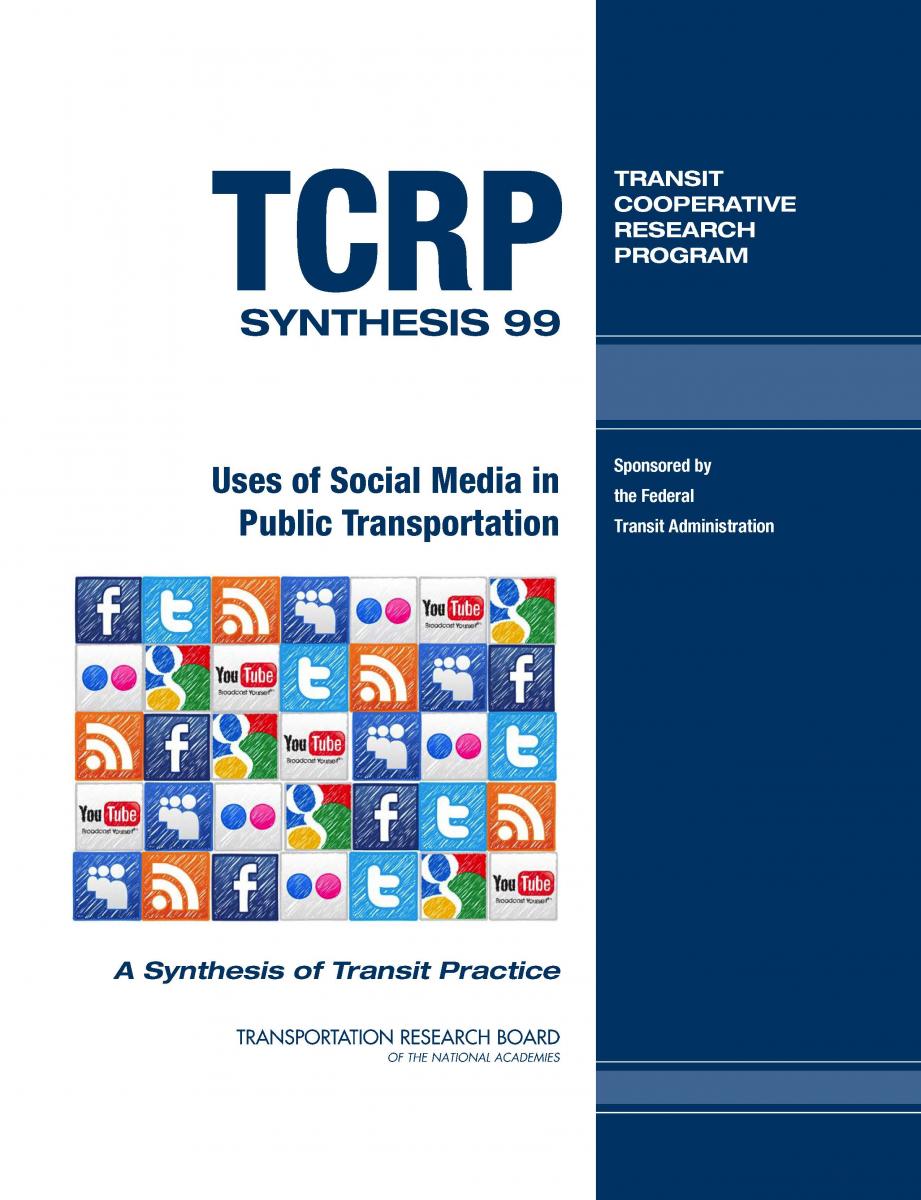Overview
 This report explores the use of social media among transit agencies and documents successful practices in the U.S. and Canada. Thirty-four of 39 transit agencies in large metro, small urban, and rural areas responded to a survey, and six of those participated in phone interviews to develop case examples.
This report explores the use of social media among transit agencies and documents successful practices in the U.S. and Canada. Thirty-four of 39 transit agencies in large metro, small urban, and rural areas responded to a survey, and six of those participated in phone interviews to develop case examples.
Reasons to use social media include:
- Providing realtime service information/advisories
- Providing general information (services, fares, projects)
- Connecting with customers informally (citizen engagement)
- Recognizing and recruiting employees
- Entertainment (songs, videos, contests)
Despite these advantages/benefits, there are also concerns with social networking’s use: resource requirements, managing employee access, responding to online criticism, accessibility, security, archiving and records retention, use privacy, and adapting to the changing social media landscape.
Key lessons learned include:
- Keep social media in perspective (users still represent a relatively small number of riders)
- Consider the organizational impacts
- Identify the real costs (especially staffing)
- Find the right voice (avoid jargon, don’t sound impersonal, acknowledging mistakes)
- Listen to feedback to learn what the agency is doing right or wrong
- Respect social media’s strengths (e.g. applicability of Twitter vs. blogs)
- Have fun (to build stronger relationships with riders/community)
- Just get started (it’s worth trying no matter the approach)
Finally, the research identified gaps in knowledge:
- Identify elements of social media policy (only about ¼ of the agencies had adopted one, although more than half had one in development)
- Apply social media metrics (effectiveness is not well understood)
- Recommend internet security protocols
- Identify features to improve accessibility for the disabled
- Understand multicultural/demographic usage to ensure fair access
- Integrate social media with other information platforms
- Identify revenue opportunities from location-based technology and social-buying services
The report’s findings are likely applicable to a broad range of transportation agencies, not just the transit sector surveyed.